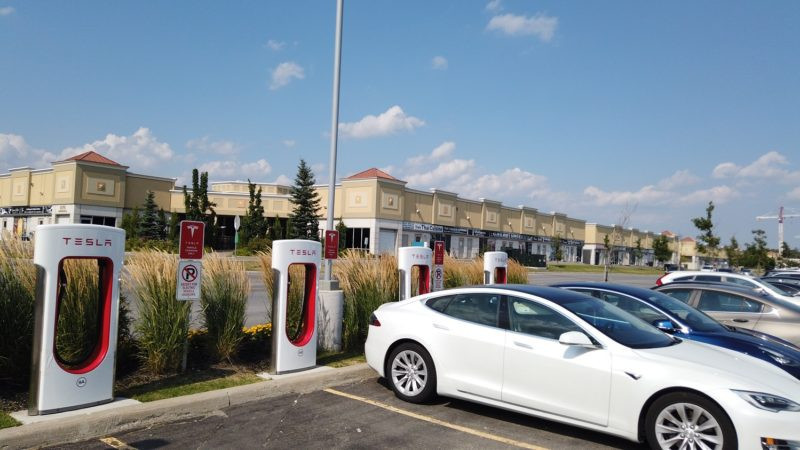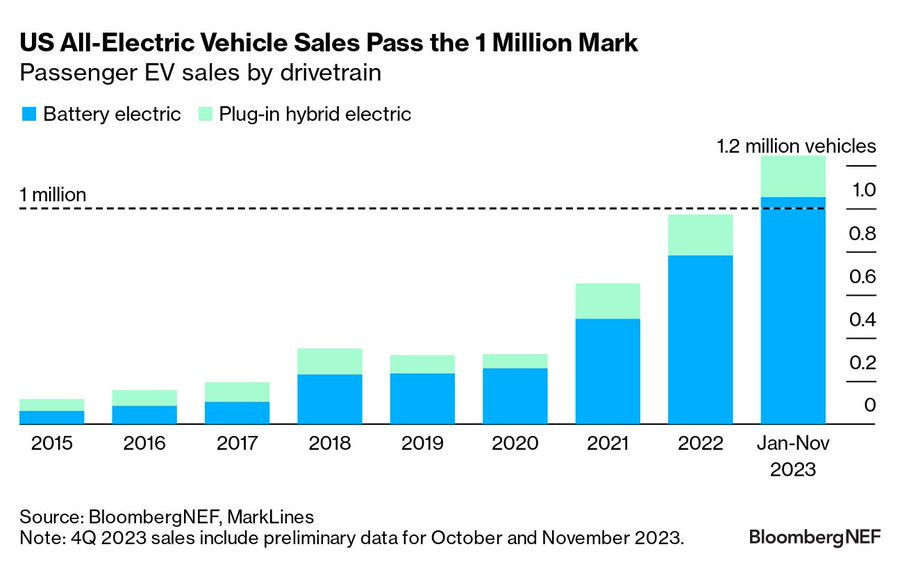According to research data from Bloomberg NEF, the US auto market has consumed over 1 million electric vehicles in the past 12 months, despite forecasts that the growth rate of new energy vehicles is slowing down.
The US electric vehicle industry faced a historic setback in the third quarter after the two giants Ford and General Motors, the most optimistic manufacturers about the prospects for electrification in the US, announced major cuts in their electric vehicle investment spending, citing “weaker than expected demand”. Most recently, nearly 4,000 auto dealers filed a petition with the US President to reconsider the development roadmap for electric vehicles, citing similar reasons: “customer demand for electric vehicles is not as high as expected” and that electric vehicles have a large inventory.
However, sales figures for new energy vehicles in the US market recently released by Bloomberg show that the situation is not really that bleak, if not completely opposite.

Specifically, according to research agency Bloomberg NEF (BNEF), for the first time in the history of electric car development, the US market has reached the milestone of consuming more than 1 million pure electric cars in the past 12 months. This sales will continue to increase when there are still more than 20 days left until the end of 2023. The proportion of new car purchases that are electric cars has exceeded 7%.
Previously, from 2011 to the end of the third quarter of 2020, it took 10 years for the US market to sell the first 1 million all-electric cars. By the end of the second quarter of 2022, or about 2 years, the US market reached the second 1 million electric car consumption figure. Entering 2023, it only took the US 1 more year to reach the third 1 million electric car figure. Thus, in the past 13 years since the formation of the electric car market in the US, a total of more than 3 million new electric cars have reached consumers.
It can be said that the demand for electric vehicles by consumers in the US is reaching an unprecedented high speed, especially in the last 3 years. In terms of year, if in 2020, only about 250,000 electric vehicles were sold in this country, after 3 years, sales in 1 year have increased more than 4 times. The capacity of the electric car market is really exploding.
The only time US electric vehicle sales fell in the past 12 months was Q3 2019. That was when the Covid-19 pandemic broke out, and at the same time, Tesla shifted a significant portion of its Tesla Model 3 inventory overseas.
Contributing to the above success are two factors, Tesla has overtaken Toyota to become the best-selling car brand in the US. This brand currently holds a 61% market share of electric cars in the US. At the same time, the state of California is in the top 10 strongest electric car consumption markets with a new electric car ownership rate of up to 5%.
Globally, electric vehicles are also enjoying great success. BNEF estimates that 14.2 million new-energy vehicles (both pure electric and hybrid) will be sold globally in 2023, up 35% from the same period last year. In contrast, sales of conventional internal combustion engines peaked in 2017 and have been steadily declining over the years.

However, this does not mean that the development of electric vehicles does not have challenges. Having to develop new types of future vehicles with modern technology will make it extremely difficult for the supply chain to change in the process of regeneration and adaptation. Problems that need better solutions such as battery production and charging station infrastructure are still being focused on by global car manufacturers. Not only that, it is not easy to convince consumers to give up their habit of using internal combustion engine vehicles. Therefore, there are always major obstacles to the rapid development of electric vehicles. However, in return, a series of national governments have proposed roadmaps to eliminate internal combustion engine vehicles and completely switch to electric vehicles by 2050 at the latest, demonstrating great determination in the green revolution of transportation.
According to Vietnamnet